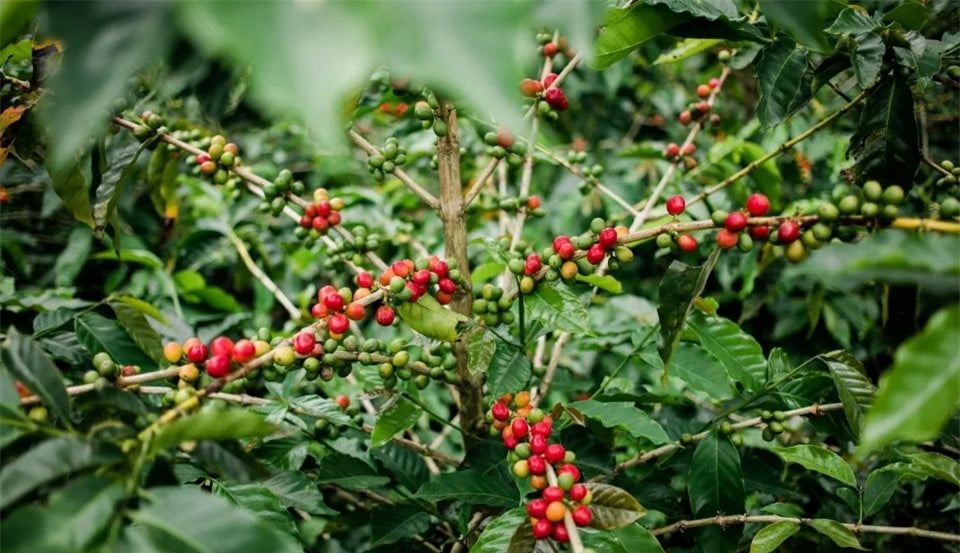Pepper Market April 29, 2025: Stable before the holiday, demand from the US remains high

In the domestic market
Pepper prices today in the domestic market continue to be stable in the range of 154,500 - 156,000 VND/kg.
Specifically, the highest pepper price in Dak Lak and Dak Nong provinces was 156,000 VND/kg. Next was pepper price in Ba Ria - Vung Tau, Binh Phuoc and Dong Nai provinces at 155,000 VND/kg. In Gia Lai alone, pepper price was at the lowest level of 154,500 VND/kg.
|
Province/district (survey area) |
Purchase price on April 29 (Unit: VND/kg) |
Change from previous day (Unit: VND/kg) |
| Dak Lak |
156,000 |
– |
| Gia Lai |
154,500 |
– |
| Dak Nong |
156,000 |
– |
| Ba Ria – Vung Tau |
155,000 |
– |
| Binh Phuoc |
155,000 |
– |
| Dong Nai |
155,000 |
– |
In the world market
At the end of the most recent trading session, the International Pepper Community (IPC) continued to list the price of Malaysian ASTA black pepper at 9,300 USD/ton; Indonesian Lampung black pepper at 7,126 USD/ton; and Brazilian ASTA black pepper at 6,900 USD/ton.
Vietnam's black pepper export price continues to fluctuate between 6,800 - 6,900 USD/ton for 500 g/l and 550 g/l.
|
Type name |
World black pepper price list |
|
|
April 29 (Unit: USD/ton) |
% change from previous day |
|
|
Lampung Black Pepper (Indonesia) |
7.126 |
– |
|
Brazilian Black Pepper ASTA 570 |
6,900 |
– |
|
Kuching Black Pepper (Malaysia) ASTA |
9,300 |
– |
|
Vietnamese black pepper (500 g/l) |
6,800 |
– |
|
Vietnamese black pepper (500 g/l) |
6,900 |
– |
At the same time of survey, the price of Malaysian ASTA white pepper stood at 11,900 USD/ton. In addition, Vietnamese white pepper continued to move sideways at 9,800 USD/ton; while Indonesian Muntok white pepper was 9,643 USD/ton.
|
Type name |
World white pepper price list |
|
|
April 29 (Unit: USD/ton) |
% change from previous day |
|
|
Muntok Indonesian White Pepper |
9,643 |
– |
|
ASTA Malaysian White Pepper |
11,900 |
– |
|
Vietnam white pepper |
9,800 |
– |
Update pepper information
According to Ptexim's latest report, demand is improving in major markets such as the EU and Asia, while China is still buying quite slowly.
China’s pepper imports from Vietnam in the first quarter of 2025 increased by 87.8% year-on-year, but the country still maintained cautious purchasing activities. Current import volumes are still 92.2% lower than in 2023, suggesting that this is a strategic supplement rather than an urgent need.
As for the US market, demand is quite good for long-term orders for Q3 and Q4/2025, showing strong confidence in the stability of the market and the possibility of future supply shortages. However, exporters are almost not offering long-term contracts because the market is forecast to continue to increase prices in 2025 and 2026.
On April 28, the Ministry of Industry and Trade held a conference on trade promotion with the Vietnamese Trade Offices abroad in April 2025. Mr. Do Ngoc Hung, Trade Counselor, Head of the Vietnamese Trade Office in the US, said that in the first quarter of 2025, Vietnam's exports to the US reached 31.4 billion USD, up 22% over the same period, and imports reached 4.1 billion USD, up 21%.
This result shows that the foreign trade structure between Vietnam and the US is complementary and not directly competitive.
In the context of trade between Vietnam and the US facing challenges related to tariffs, Mr. Do Ngoc Hung believes that there are still opportunities in challenges.
Accordingly, currently many leading US retail corporations such as Walmart, Target (importing 30% of Vietnamese goods), Costco, HomeDepot... still show their support and trust that Vietnam will reach an agreement with the US, through removing reciprocal tariffs.
“Leading US businesses and distribution corporations are considering attending the event Connecting the International Supply Chain - Vietnam International Sourcing & Ho Chi Minh City Export Forum 2025 taking place in September 2025, co-organized and implemented by the Ministry of Industry and Trade,” Mr. Do Ngoc Hung informed, adding that there are many positive signals in the issue of tariff negotiations between the two countries.















Comment (0)